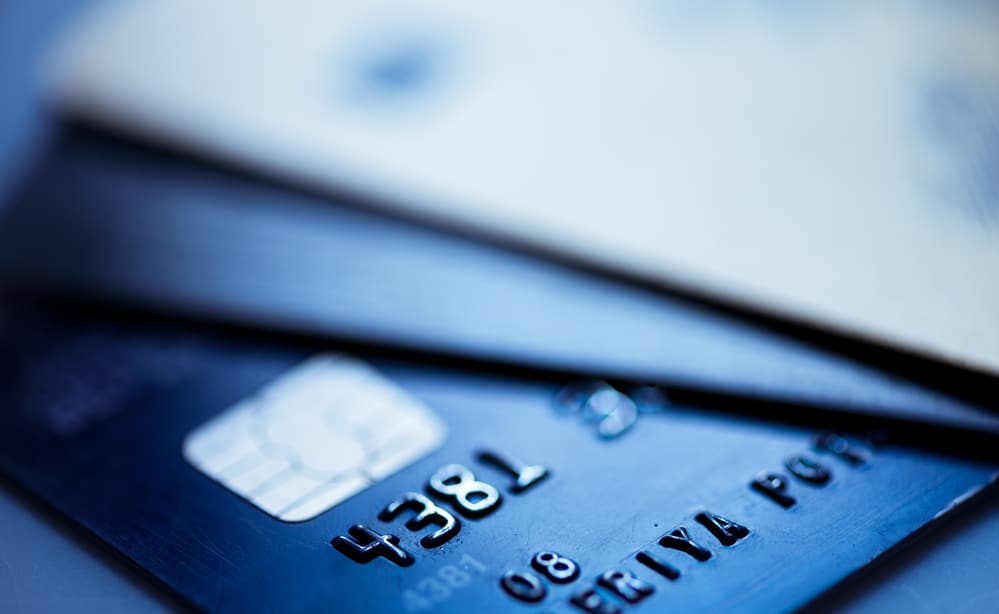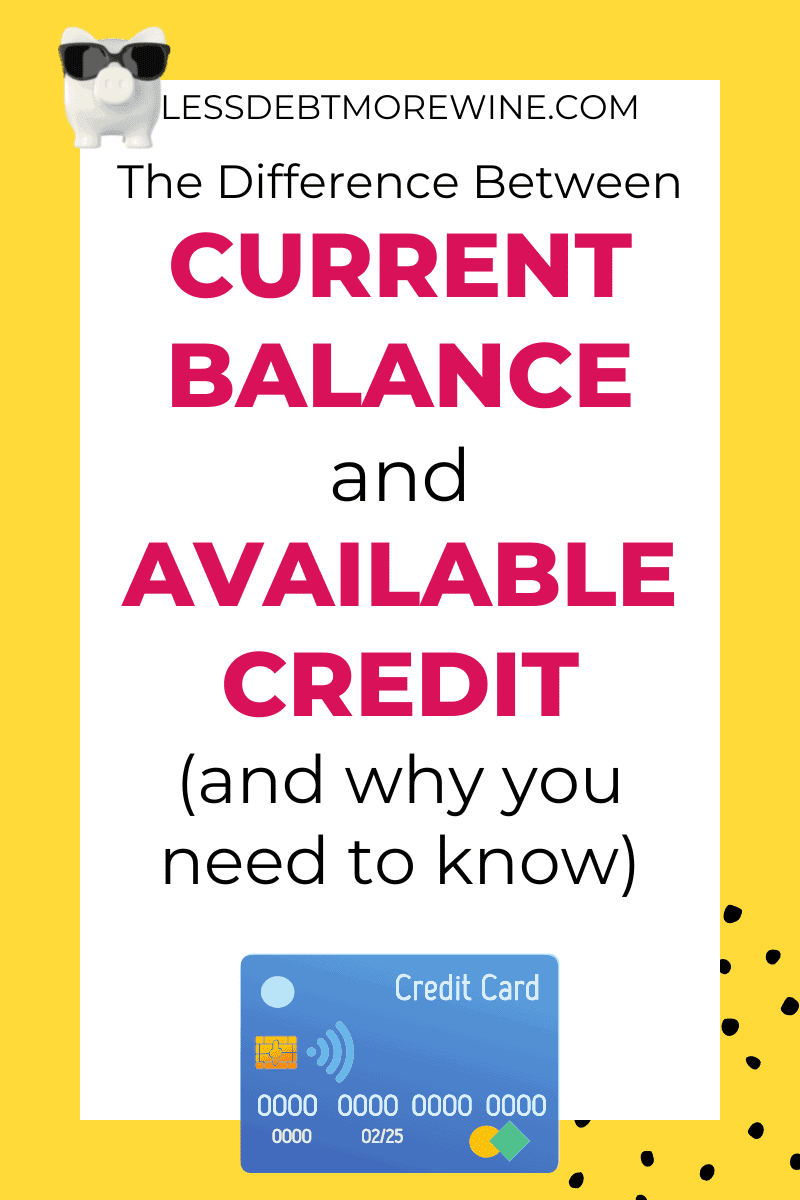There are lot of terms in personal finance and it can be hard to keep them all straight. In this post, we’ll dig into current balance and available credit. We’ll cover what they mean, how they are related, and what you should know.
What they Are
Your current balance is the amount of money you currently owe on your credit card.
Your available credit is the total amount of money you could spend if you maxed out your card.
What is the difference between your current balance and available credit on your credit card statement?
Your current credit card balance is the outstanding balance on your credit card that you currently owe. This number fluctuates as you make new purchases and payments on your account.
Available credit shows how much credit you have available to you. This number will also fluctuate, but it’s important to keep it high so you have a cushion in case of emergency purchases.
By keeping track of both of these numbers, you can ensure that you don’t overspend on your credit card and stay within your budget.
How can you improve your credit score by keeping an eye on your current balance vs available credit?
One way to improve your credit score is by keeping an eye on your current balance vs available credit. By maintaining a low current balance and high available credit, you can improve your credit score. This shows creditors that you’re a responsible borrower and are less likely to default on your debt.
There are other factors that contribute to your credit score, but maintaining a low current balance vs available credit is one way to help improve your financial health.
Related: Is a Credit Score of 740 good?
Examples of how a high current balance and low available credit can hurt your credit score
There are a few ways that having a high current balance and low available credit can hurt your credit score.
First, it shows creditors that you’re using a large portion of your available credit, which can be a red flag for defaulting on debt.
Additionally, it can lead to higher interest rates and fees if you’re carrying a balance on your credit card.
Finally, a high current balance can also lower your credit score if you’re close to your credit limit.
Tips for keeping your current balance low and available credit high
There are a few ways you can keep your current balance low and available credit high. One way is to make sure you’re only using your credit card for necessary purchases and not impulse buying.
Additionally, you can set up automatic payments to ensure that your bill is paid in full each month.
Finally, you can try to increase your credit limit so you have more available credit to work with. By following these tips, you can improve your financial health and keep your credit score high.
Questions to ask yourself if you are having trouble managing your credit card debt
If you’re having trouble managing your credit card debt, there are a few questions you can ask yourself to help get your finances back on track.
First, do you have a budget? If not, creating one can help you keep track of your spending and make sure you’re not overspending.
Additionally, are you only using your credit card for necessary purchases? If you’re using it for impulse buying, you may want to consider cutting up your card or only using cash.
Finally, are you making your minimum payments each month? If not, you’ll want to focus on doing so to avoid late fees and damage to your credit score.
By asking yourself these questions, you can get a better handle on your credit card debt and improve your financial health.
Related: How I Paid Off All My Credit Card Debt
Bottom Line
Keeping an eye on your current credit balance vs available credit can help you manage your credit card debt and maintain good financial habits.
You can use this information to see whether you need to cut back on unnecessary expenses or increase your available credit.

Frequently Asked Questions
If you still have some questions about current balance vs available credit, read on!
Why are my current balance and available credit different?
The current balance on your credit card is the outstanding balance that you owe, including any interest and fees. The available credit is the total credit limit on your card minus the current balance. So, if you have a current balance of $100 and a credit limit of $1,000, your available credit would be $900.
Do I go by current balance or available credit?
Your current balance is what you already owe, and your available credit is what you have left on your credit card limit and could technically spend. However, it’s never a good idea to use up all of your available credit.
What is a good current balance vs available credit
A good ratio to aim for is a current balance that is 30% or less of your available credit. So, if you have a credit limit of $1,000, you should try to keep your balance below $300.
Can I spend available credit?
Yes, you can spend up to the available credit limit on your card. However, it’s important to keep in mind that your current balance will increase as you make purchases. You should only charge what you can afford to pay off in full each month to avoid interest and fees.
Additionally, try to keep your credit utilization ratio below 30% of your available credit to help improve your credit score.
What if I can’t pay my current balance
If you can’t pay your current balance in full, you may be charged interest on the outstanding balance. Additionally, you may have to pay a late fee if you make a payment after the due date. If you’re having trouble making payments, you can contact your credit card issuer to set up a payment plan.
What is the difference between a current balance and statement balance
Your current balance is the outstanding balance on your credit card, including any interest and fees. The statement balance is the balance on your credit card at the end of your billing cycle. This number may be different from your current balance if you’ve made purchases or payments since your last statement.
Why is my current balance more than my credit limit
If your current balance is more than your credit limit, you may be charged an over-limit fee. Additionally, your credit card issuer may raise your interest rate or lower your credit limit. If you’re having trouble making payments, you can contact your credit card issuer to set up a payment plan.
Can I spend Pending money
No, you cannot spend pending money because it is not yet available to you. Pending transactions are typically held for a few days before they are processed and the funds are made available.
Additionally, some transactions may take longer to process, such as checks or international transactions. You should only spend the money that is available in your account to avoid overdraft fees.
What is the difference between a current balance and credit limit
Your current balance is the outstanding balance on your credit card, including any interest and fees. The credit limit is the maximum amount you’re allowed to spend in a day, month, or billing cycle.
What is the difference between a closing balance and an available balance
Your closing balance is the balance on your credit card at the end of your billing cycle. This number may be different from your current balance if you’ve made purchases or payments since your last statement.
The available balance is the difference between your credit limit and your current balance. For example, if your credit limit is $1,000 and your current balance is $500, you have $500 of available credit. You should try to keep your current balance below 30% of your available credit to help improve your credit score.
Should I pay my last statement balance of my credit card or all of my current balance
You should pay your statement balance in full each month to avoid paying interest on your balance. Additionally, you should pay your statement balance before the due date to avoid paying late fees.
While you can pay off your current balance, purchases made since your last statement close date, will be included in your next statement balance and not incur interest for fees unless you don’t pay the next statement balance in full.


